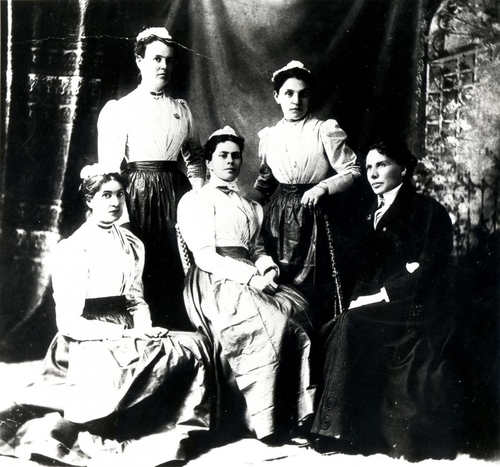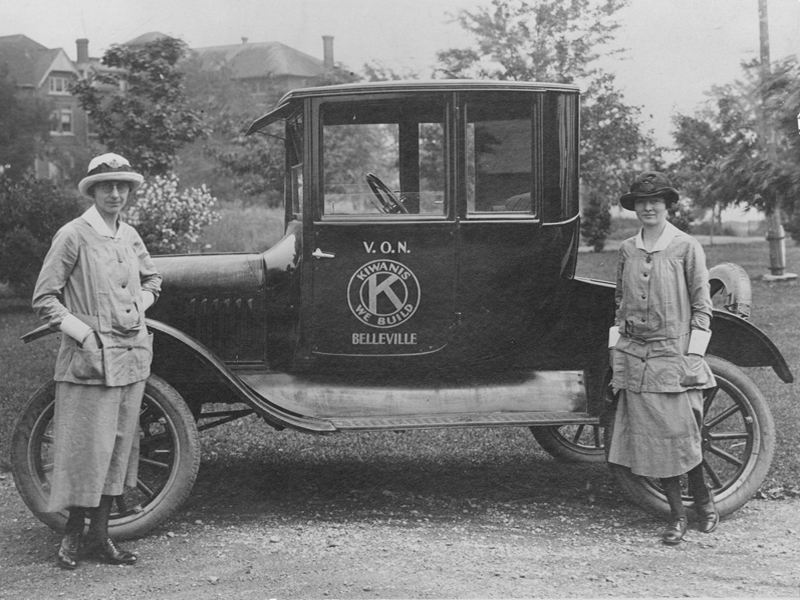Leading home and community care since 1897
We were one of the first organizations in Canada to provide home nursing care and public health nursing. We remain innovators and trailblazers in home and community care to this day.
We were established in 1897 to ensure that care was available, affordable and accessible to everyone in Canada — no matter where they live. It’s work that we’ve continued for over a century. We were among the first in Canada to offer prenatal education, well-baby clinics, school health services, visiting nurses and coordinated home care programs. We’ve helped communities across Canada during some of the most devastating periods in our country’s history — World War I, the horrific explosion of a munitions ship in the Halifax harbour in 1917, the deadly influenza epidemic of 1918, the Great Depression, World War II and the COVID-19 pandemic. We are proud of our legacy, and of the fact that, well into our second century, our priority remains to provide care and support to Canadians in their own homes and communities, where they want to be.
Our origins
“Young mothers and children had died, whilst husbands and fathers were traveling many weary miles for the medical and nursing aid which might have saved them.”
This was how Lady Ishbel Aberdeen recounted the stories she’d heard at the 1896 meeting of the National Council of Women, a group that she founded only three years prior. The Council was discussing the consequences of Canada’s dangerous shortage of nurses, doctors and hospitals — especially in remote areas.
Lady Aberdeen wasn’t just the wife of Canada’s governor general, but also a philanthropist and a women’s rights advocate who would be the first woman to address Canadian Parliament and the first woman in Canada to receive an honorary degree. As a woman with the compassion and social standing to effect real change, the National Council passed a resolution asking Lady Aberdeen to establish an order of visiting nurses in Canada. The order would be called the Victorian Order of Nurses (VON), to honour the 60th anniversary of Queen Victoria’s ascent to the throne, and Lady Aberdeen would become its inaugural president.
VON gains a champion
Prime Minister Sir Wilfred Laurier introduced a motion for the inauguration of the Victorian Order of Nurses the following year, however criticism from Canada’s medical establishment caused parliamentary support to falter. In response, Lady Aberdeen enlisted the help of Dr. Alfred Worcester, a Harvard professor and founder of the Waltham Training School for Nurses in Massachusetts.
Dr. Worcester spoke to large audiences of doctors in Ottawa, Toronto and other Canadian cities about the urgent need for nursing and the critical role nurses could play in remote and under-served areas. He also recruited Charlotte Macleod, a Canadian who had studied with the legendary Florence Nightingale, to help set up the VON Canada. Macleod became VON Canada’s first chief superintendent, welcoming the first 12 nurses into the Order in November 1897. A month later, Queen Victoria granted a royal charter to the VON Canada.
Ready when Canadians needed us most
The Order’s first challenges were to provide visiting nursing services to areas without medical facilities and to establish small “cottage” hospitals in isolated areas.
In 1898, a team of four VON Canada nurses accompanied a Canadian Field Force of military and government officials to the Yukon where tens of thousands of prospectors sought their fortunes during the Klondike Gold Rush. They helped care for the many victims of the typhoid epidemic that was raging throughout the Klondike.
That same year, VON Canada sites opened in Ottawa, Montreal, Toronto, Halifax, Vancouver and Kingston. A VON Canada “cottage” hospital was also set up in Regina to provide care to early settlers on the Prairies. In addition, VON Canada established its first nurse training program in Ottawa.
Through the successful fundraising efforts of Lady Minto, the VON Canada’s second honorary president after Lady Aberdeen, 43 more hospitals were soon established in local communities and within isolated areas throughout Canada. Responsibility for running these institutions was gradually assumed by community groups, with the last VON Canada-run hospital placed in the hands of local citizens in 1924.
We began more than 120 years ago by working within communities to create opportunities for people to work together to meet their own needs and those of their friends and neighbours. This is a proud legacy we continue to this day.




